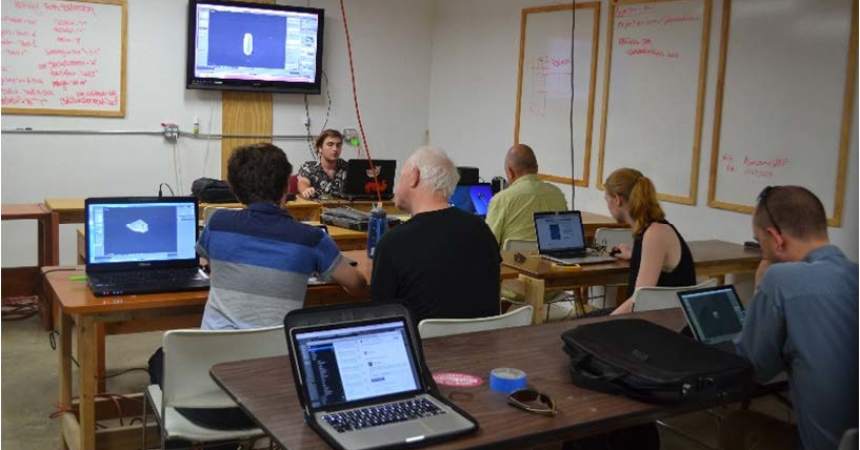
Students Learn 3-D Printing

Kenyon Bertelsen, in the front of the class, taught students about how to add details to their vase.
Photos by Janelle Floyd
By Janelle Floyd
Senior Outlook Writer
The 3-D printer buzzed in the background of the Making Awesome Studio at Railroad Square, as students learned how to make their own designs.
Kenyon Bertelsen, 18-year-old class instructor, sat in front of the classroom with his computer hooked to the projector. On the final day of the class, taught over the past four Saturdays, students learned how to draw and create a detailed vase.
Everyone in the room had their laptops open to Blender, a free professional-level 3-D computer graphics software. The software is used for creating animated films, art, visual effects and in this case, 3-D printed models.
“When creating your model for the vase, make sure to take your time and go slow,” Bertelsen coached the class.
He further added, for students not to get frustrated with the software program because it is complex and challenging to learn.
That last note from the instructor was not lost on student Dennis Howler.
“I’m still trying to get a feel for this (Blender) program,” Howler said staring at his computer. “I’m an artist and a sculptor, and I’m trying to put everything I learned from class into my work.”
“In particular, this seems like a good way to make my artwork, my cats. Rather than sculpting them in the real world, to show somebody what I am talking about, I can sculpt it in Blender.”
While the class continued to play around with the program and designing their vase, Brad Harris, Making Awesome’s 3-D printer guru walked around answering questions. After a couple of minutes he stepped back and watched the class.
“There has been a major increase in people wanting to know about 3-D printing,” Harris started. “People want to know how to start from nothing, with a blank canvas, to creating a model on your 3-D printer.”
“So for instance, if you have a specific need for a part for your automobile, washing machine, or refrigerator, you could create that part digitally and send it to the 3-D printer,” Harris continued.
“This is happening now and is the future.”
To find out more information about the next 3-D printing class or visit the Making Awesome Studio, visit http://www.makingawesome.org.








